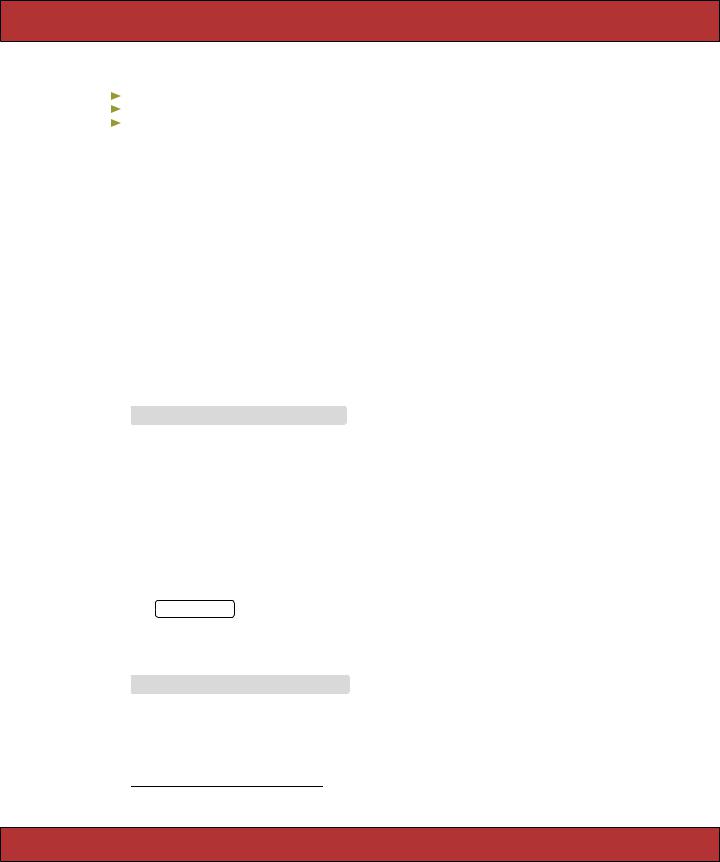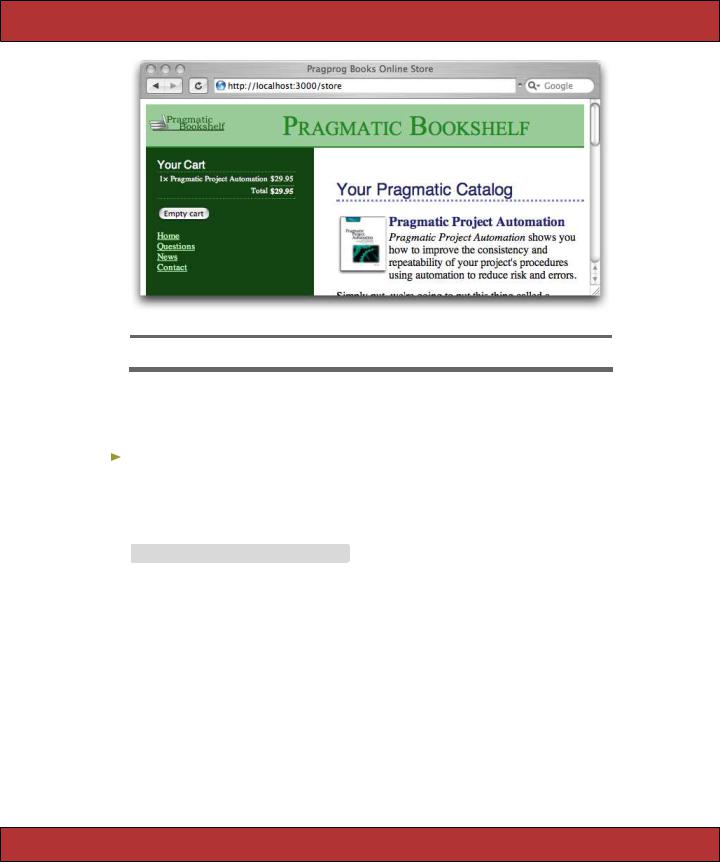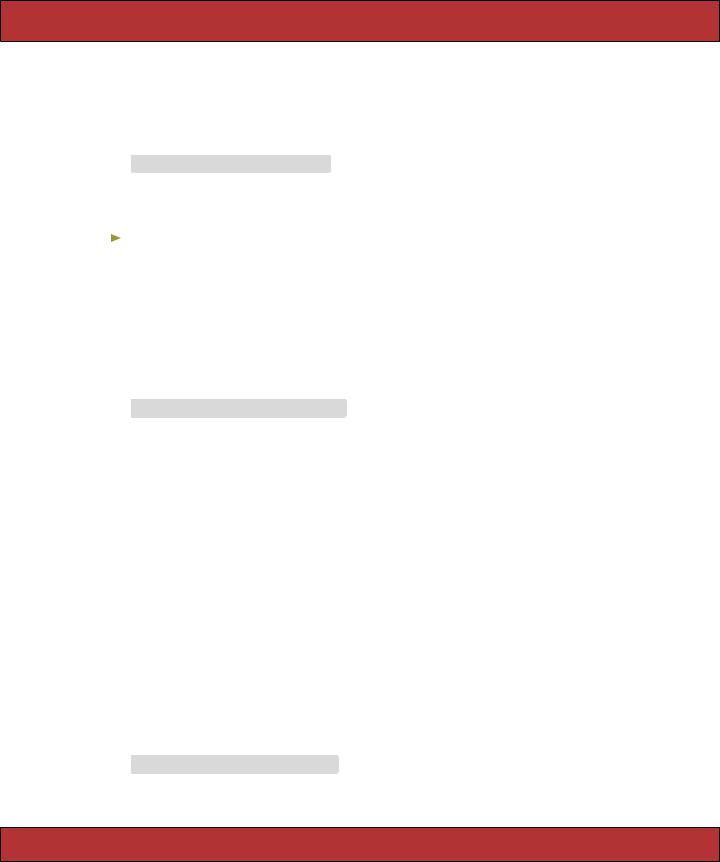
- •Contents
- •Preface to the Second Edition
- •Introduction
- •Rails Is Agile
- •Finding Your Way Around
- •Acknowledgments
- •Getting Started
- •The Architecture of Rails Applications
- •Models, Views, and Controllers
- •Active Record: Rails Model Support
- •Action Pack: The View and Controller
- •Installing Rails
- •Your Shopping List
- •Installing on Windows
- •Installing on Mac OS X
- •Installing on Linux
- •Development Environments
- •Rails and Databases
- •Rails and ISPs
- •Creating a New Application
- •Hello, Rails!
- •Linking Pages Together
- •What We Just Did
- •Building an Application
- •The Depot Application
- •Incremental Development
- •What Depot Does
- •Task A: Product Maintenance
- •Iteration A1: Get Something Running
- •Iteration A2: Add a Missing Column
- •Iteration A3: Validate!
- •Iteration A4: Prettier Listings
- •Task B: Catalog Display
- •Iteration B1: Create the Catalog Listing
- •Iteration B4: Linking to the Cart
- •Task C: Cart Creation
- •Sessions
- •Iteration C1: Creating a Cart
- •Iteration C2: A Smarter Cart
- •Iteration C3: Handling Errors
- •Iteration C4: Finishing the Cart
- •Task D: Add a Dash of AJAX
- •Iteration D1: Moving the Cart
- •Iteration D3: Highlighting Changes
- •Iteration D4: Hide an Empty Cart
- •Iteration D5: Degrading If Javascript Is Disabled
- •What We Just Did
- •Task E: Check Out!
- •Iteration E1: Capturing an Order
- •Task F: Administration
- •Iteration F1: Adding Users
- •Iteration F2: Logging In
- •Iteration F3: Limiting Access
- •Iteration F4: A Sidebar, More Administration
- •Task G: One Last Wafer-Thin Change
- •Generating the XML Feed
- •Finishing Up
- •Task T: Testing
- •Tests Baked Right In
- •Unit Testing of Models
- •Functional Testing of Controllers
- •Integration Testing of Applications
- •Performance Testing
- •Using Mock Objects
- •The Rails Framework
- •Rails in Depth
- •Directory Structure
- •Naming Conventions
- •Logging in Rails
- •Debugging Hints
- •Active Support
- •Generally Available Extensions
- •Enumerations and Arrays
- •String Extensions
- •Extensions to Numbers
- •Time and Date Extensions
- •An Extension to Ruby Symbols
- •with_options
- •Unicode Support
- •Migrations
- •Creating and Running Migrations
- •Anatomy of a Migration
- •Managing Tables
- •Data Migrations
- •Advanced Migrations
- •When Migrations Go Bad
- •Schema Manipulation Outside Migrations
- •Managing Migrations
- •Tables and Classes
- •Columns and Attributes
- •Primary Keys and IDs
- •Connecting to the Database
- •Aggregation and Structured Data
- •Miscellany
- •Creating Foreign Keys
- •Specifying Relationships in Models
- •belongs_to and has_xxx Declarations
- •Joining to Multiple Tables
- •Acts As
- •When Things Get Saved
- •Preloading Child Rows
- •Counters
- •Validation
- •Callbacks
- •Advanced Attributes
- •Transactions
- •Action Controller: Routing and URLs
- •The Basics
- •Routing Requests
- •Action Controller and Rails
- •Action Methods
- •Cookies and Sessions
- •Caching, Part One
- •The Problem with GET Requests
- •Action View
- •Templates
- •Using Helpers
- •How Forms Work
- •Forms That Wrap Model Objects
- •Custom Form Builders
- •Working with Nonmodel Fields
- •Uploading Files to Rails Applications
- •Layouts and Components
- •Caching, Part Two
- •Adding New Templating Systems
- •Prototype
- •Script.aculo.us
- •RJS Templates
- •Conclusion
- •Action Mailer
- •Web Services on Rails
- •Dispatching Modes
- •Using Alternate Dispatching
- •Method Invocation Interception
- •Testing Web Services
- •Protocol Clients
- •Secure and Deploy Your Application
- •Securing Your Rails Application
- •SQL Injection
- •Creating Records Directly from Form Parameters
- •Avoid Session Fixation Attacks
- •File Uploads
- •Use SSL to Transmit Sensitive Information
- •Knowing That It Works
- •Deployment and Production
- •Starting Early
- •How a Production Server Works
- •Repeatable Deployments with Capistrano
- •Setting Up a Deployment Environment
- •Checking Up on a Deployed Application
- •Production Application Chores
- •Moving On to Launch and Beyond
- •Appendices
- •Introduction to Ruby
- •Classes
- •Source Code
- •Resources
- •Index
- •Symbols

In this chapter, we’ll see
•using partial templates
•rendering into the page layout
•updating pages dynamically with AJAX and rjs
•highlighting changes with Script.aculo.us
•hiding and revealing DOM elements
•working when JavaScript is disabled
Chapter 9
Task D: Add a Dash of AJAX
Our customer wants us to add AJAX support to the store. But just what is AJAX?
In the old days (up until a year or two ago), browsers were treated as really dumb devices. When you wrote a browser-based application, you’d send stuff down to the browser and then forget about that session. At some point, the user would fill in some form fields or click a hyperlink, and your application would get woken up by an incoming request. It would render a complete page back to the user, and the whole tedious process would start afresh. That’s exactly how our Depot application behaves so far.
But it turns out that browsers aren’t really that dumb (who knew?). They can run code. Almost all browsers can run JavaScript (and the vast majority also support Adobe’s Flash). And it turns out that the JavaScript in the browser can interact behind the scenes with the application on the server, updating the stuff the user sees as a result. Jesse James Garrett named this style of interaction AJAX (which once stood for Asynchronous JavaScript and XML but now just means Making Browsers Suck Less).
So, let’s AJAXify our shopping cart. Rather than having a separate shopping cart page, let’s put the current cart display into the catalog’s sidebar. Then, we’ll add the AJAX magic that updates the cart in the sidebar without redisplaying the whole page.
Whenever you work with AJAX, it’s good to start with the non-AJAX version of the application and then gradually introduce AJAX features. That’s what we’ll do here. For starters, let’s move the cart from its own page and put it in the sidebar.

ITERATION D1: MOVING THE CAR T  123
123
9.1Iteration D1: Moving the Cart
Currently, our cart is rendered by the add_to_cart action and the corresponding
.rhtml template. What we’d like to do is to move that rendering into the layout that displays the overall catalog. And that’s easy, using partial templates.1
Partial Templates
Programming languages let you define methods. A method is a chunk of code with a name: invoke the method by name, and the corresponding chunk of code gets run. And, of course, you can pass parameters to a method, which lets you write one piece of code that can be used in many different circumstances.
You can think of Rails partial templates (partials for short) as a kind of method for views. A partial is simply a chunk of a view in its own separate file. You can invoke (render) a partial from another template or from a controller, and the partial will render itself and return the results of that rendering. And, just as with methods, you can pass parameters to a partial, so the same partial can render different results.
We’ll use partials twice in this iteration. First, let’s look at the cart display itself.
Download depot_i/app/views/store/add_to_cart.rhtml
<div class="cart-title">Your Cart</div> <table>
<% for cart_item in @cart.items %>
<tr>
<td><%= cart_item.quantity %>×</td> <td><%= h(cart_item.title) %></td>
<td class="item-price"><%= number_to_currency(cart_item.price) %></td> </tr>
<% end %>
<tr class="total-line" >
<td colspan="2">Total</td>
<td class="total-cell"><%= number_to_currency(@cart.total_price) %></td> </tr>
</table>
<%= button_to "Empty cart", :action => :empty_cart %>
1. Another way would be to use components. A component is a way of packaging some work done by a controller and the corresponding rendering. In our case, we could have a component called display_cart, where the controller action fetches the cart information from the session and the view renders the HTML for the cart. The layout would then insert this rendered HTML into the sidebar. However, there are indications that components are falling out of favor in the Rails community, so we won’t use one here. (For a discussion of why components are déclassé, see Section 22.9, The Case against Components, on page 512.)
Report erratum

ITERATION D1: MOVING THE CAR T  124
124
It creates a list of table rows, one for each item in the cart. Whenever you find yourself iterating like this, you might want to stop and ask yourself, is this too much logic in a template? It turns out we can abstract away the loop using partials (and, as we’ll see, this also sets the stage for some AJAX magic later). To do this, we’ll make use of the fact that you can pass a collection to the method that renders partial templates, and that method will automatically invoke the partial once for each item in the collection. Let’s rewrite our cart view to use this feature.
Download depot_j/app/views/store/add_to_cart.rhtml
<div class="cart-title">Your Cart</div> <table>
<%= render(:partial => "cart_item", :collection => @cart.items) %>
<tr class="total-line" >
<td colspan="2">Total</td>
<td class="total-cell"><%= number_to_currency(@cart.total_price) %></td> </tr>
</table>
<%= button_to "Empty cart", :action => :empty_cart %>
That’s a lot simpler. The render method takes the name of the partial and the collection object as parameters. The partial template itself is simply another template file (by default in the same directory as the template that invokes it). However, to keep the names of partials distinct from regular templates, Rails automatically prepends an underscore to the partial name when looking for the file. That means our partial will be stored in the file _cart_item.rhtml in the app/views/store directory.
Download depot_j/app/views/store/_cart_item.rhtml
<tr>
<td><%= cart_item.quantity %>×</td> <td><%= h(cart_item.title) %></td>
<td class="item-price" ><%= number_to_currency(cart_item.price) %></td> </tr>
There’s something subtle going on here. Inside the partial template, we refer to the current cart item using the variable cart_item. That’s because the render method in the main template arranges to set a variable with the same name as the partial template to the current item each time around the loop. The partial is called cart_item, so inside the partial we expect to have a variable called cart_item.
So now we’ve tidied up the cart display, but that hasn’t moved it into the sidebar. To do that, let’s revisit our layout. If we had a partial template that could display the cart, we could simply embed a call to
render(:partial => "cart")
Report erratum

ITERATION D1: MOVING THE CAR T  125
125
within the sidebar. But how would the partial know where to find the cart object? One way would be for it to make an assumption. In the layout, we have access to the @cart instance variable that was set by the controller. It turns out that this is also available inside partials called from the layout. However, this is a bit like calling a method and passing it some value in a global variable. It works, but it’s ugly coding, and it increases coupling (which in turn makes your programs brittle and hard to maintain).
Remember using render with the collection option inside the add_to_cart template? It set the variable cart_item inside the partial. It turns out we can do the same when we invoke a partial directly. The :object parameter to render takes an object that is assigned to a local variable with the same name as the partial. So, in the layout we could call
<%= render(:partial => "cart", :object => @cart) %>
and in the _cart.rhtml template, we can refer to the cart via the variable cart.
Let’s do that wiring now. First, we’ll create the _cart.rhtml template. This is basically our add_to_cart template but using cart instead of @cart. (Note that it’s OK for a partial to invoke other partials.)
Download depot_j/app/views/store/_cart.rhtml
<div class="cart-title">Your Cart</div> <table>
<%= render(:partial => "cart_item", :collection => cart.items) %>
<tr class="total-line" >
<td colspan="2">Total</td>
<td class="total-cell"><%= number_to_currency(cart.total_price) %></td> </tr>
</table>
<%= button_to "Empty cart", :action => :empty_cart %>
Now we’ll change the store layout to include this new partial in the sidebar.
Download depot_j/app/views/layouts/store.rhtml
<!DOCTYPE html PUBLIC "-//W3C//DTD XHTML 1.0 Transitional//EN" "http://www.w3.org/TR/xhtml1/DTD/xhtml1-transitional.dtd" >
<html>
<head>
<title>Pragprog Books Online Store</title>
<%= stylesheet_link_tag "depot", :media => "all" %>
</head>
<body id="store"> <div id="banner">
<img src="/images/logo.png" />
<%= @page_title || "Pragmatic Bookshelf" %>
</div>
<div id="columns">
Report erratum

ITERATION D1: MOVING THE CAR T  126
126
<div id="side">
<div id="cart">
<%= render(:partial => "cart", :object => @cart) %>
</div>
<a href="http://www....">Home</a><br />
<a href="http://www..../faq">Questions</a><br /> <a href="http://www..../news" >News</a><br />
<a href="http://www..../contact">Contact</a><br />
</div>
<div id="main">
<% if flash[:notice] -%>
<div id="notice"><%= flash[:notice] %></div> <% end -%>
<%= yield :layout %>
</div>
</div>
</body>
</html>
Now we have to make a small change to the store controller. We’re invoking the layout while looking at the store’s index action, and that action doesn’t currently set @cart. That’s easy enough to remedy.
Download depot_j/app/controllers/store_controller.rb
def index
@products = Product.find_products_for_sale @cart = find_cart
end
If you display the catalog after adding something to your cart, you should see something like Figure 9.1, on the following page.2 Let’s just wait for the Webby Award nomination.
Changing the Flow
Now that we’re displaying the cart in the sidebar, we can change the way that the Add to Cart button works. Rather than displaying a separate cart page, all it has to do is refresh the main index page. The change is pretty simple: at the end of the add_to_cart action, we simply redirect the browser back to the index.
Download depot_k/app/controllers/store_controller.rb
def add_to_cart begin
product = Product.find(params[:id]) rescue ActiveRecord::RecordNotFound
logger.error("Attempt to access invalid product #{params[:id]}") redirect_to_index("Invalid product")
2. And if you’ve updated your CSS appropriately.... See the listing on page 678 for our CSS.
Report erratum

ITERATION D1: MOVING THE CAR T  127
127
Figure 9.1: The Cart Is in the Sidebar
else
@cart = find_cart @cart.add_product(product) redirect_to_index
end end
For this to work, we need to change the definition of redirect_to_index to make the message parameter optional.
Download depot_k/app/controllers/store_controller.rb
def redirect_to_index(msg = nil) flash[:notice] = msg if msg redirect_to :action => :index
end
We should now get rid of the add_to_cart.rhtml template—it’s no longer needed. (What’s more, leaving it lying around might confuse us later in this chapter.)
So, now we have a store with a cart in the sidebar. When you click to add an item to the cart, the page is redisplayed with an updated cart. However, if our catalog is large, that redisplay might take a while. It uses bandwidth, and it uses server resources. Fortunately, we can use AJAX to make this better.
Report erratum

ITERATION D2: AN AJAX-BASED CAR T  128
128
9.2Iteration D2: An AJAX-Based Cart
AJAX lets us write code that runs in the browser that interacts with our serverbased application. In our case, we’d like to make the Add to Cart buttons invoke the server add_to_cart action in the background. The server can then send down just the HTML for the cart, and we can replace the cart in the sidebar with the server’s updates.
Now, normally you’d do this by writing JavaScript that runs in the browser and by writing server-side code that communicated with this JavaScript (possibly using a technology such as JSON). The good news is that, with Rails, all this is hidden from you. We can do everything we need to do using Ruby (and with a whole lot of support from some Rails helper methods).
The trick when adding AJAX to an application is to take small steps. So, let’s start with the most basic one. Let’s change the catalog page to send an AJAX request to our server application, and have the application respond with the HTML fragment containing the updated cart.
On the index page, we’re using button_to to create the link to the add_to_cart action. Underneath the covers, button_to generates an HTML form. The helper
<%= button_to "Add to Cart", :action => :add_to_cart, :id => product %>
generates HTML that looks something like
<form method="post" action="/store/add_to_cart/1" class="button-to"> <input type="submit" value="Add to Cart" />
</form>
This is a standard HTML form, so a POST request will be generated when the user clicks the submit button. We want to change this to send an AJAX request instead. To do this, we’ll have to code the form explicitly, using a Rails helper called form_remote_tag. The form_..._tag parts of the name tell you it’s generating an HTML form, and the remote part tells you it will use AJAX to create a remote procedure call to your application. So, edit index.rhtml in the app/views/store directory, replacing the button_to call with something like this.
Download depot_l/app/views/store/index.rhtml
<% form_remote_tag :url => { :action => :add_to_cart, :id => product } do %> <%= submit_tag "Add to Cart" %>
<% end %>
You tell form_remote_tag how to invoke your server application using the :url parameter. This takes a hash of values that are the same as the trailing parameters we passed to button_to. The code inside the Ruby block (between the do and end keywords) is the body of the form. In this case, we have a simple submit button. From the user’s perspective, this page looks identical to the previous one.
Report erratum

ITERATION D2: AN AJAX-BASED CAR T  129
129
While we’re dealing with the views, we also need to arrange for our application to send the JavaScript libraries used by Rails to the user’s browser. We’ll talk a lot more about this in Chapter 23, The Web, V2.0, on page 521, but for now let’s just add a call to javascript_include_tag to the <head> section of the store layout.
Download depot_l/app/views/layouts/store.rhtml
<html>
<head>
<title>Pragprog Books Online Store</title>
<%= stylesheet_link_tag "depot", :media => "all" %> <%= javascript_include_tag :defaults %>
</head>
So far, we’ve arranged for the browser to send an AJAX request to our application. The next step is to have the application return a response. The plan is to create the updated HTML fragment that represents the cart and to have the browser stick that HTML into the DOM as a replacement for the cart that’s already there. The first change is to stop the add_to_cart action redirecting to the index display. (I know, we just added that only a few pages back. Now we’re taking it out again. We’re agile, right?)
Download depot_l/app/controllers/store_controller.rb
def add_to_cart begin
product = Product.find(params[:id]) rescue ActiveRecord::RecordNotFound
logger.error("Attempt to access invalid product #{params[:id]}") redirect_to_index("Invalid product")
else
@cart = find_cart @cart.add_product(product)
end end
Because of this change, when add_to_cart finishes handling the AJAX request, Rails will look for an add_to_cart template to render. We deleted the old .rhtml template back on page 127, so it looks like we’ll need to add something back in. Let’s do something a little bit different.
Rails 1.1 introduced the concept of RJS templates. The js in .rjs stands for JavaScript. An .rjs template is a way of getting JavaScript on the browser to do what you want, all by writing server-side Ruby code. Let’s write our first: add_to_cart.rjs. It goes in the app/views/store directory, just like any other template.
Download depot_l/app/views/store/add_to_cart.rjs
page.replace_html("cart" , :partial => "cart", :object => @cart)
Report erratum

ITERATION D2: AN AJAX-BASED CAR T  130
130
Let’s analyze that template. The page variable is an instance of something called a JavaScript generator—a Rails class that knows how to create JavaScript on the server and have it executed by the browser. Here, we tell it to replace the content of the element on the current page with the id cart with...something. The remaining parameters to replace_html look familiar. They should—they’re the same ones we used to render the partial in the store layout. This simple .rjs template renders the HTML that represents the cart. It then tells the browser to replace the content of <div> whose id="cart" with that HTML.
Does it work? It’s hard to show in a book, but it sure does. Make sure you reload the index page in order to get the form_remote_tag and the JavaScript libraries loaded into your browser. Then, click one of the Add to Cart buttons. You should see the cart in the sidebar update. And you shouldn’t see your browser show any indication of reloading the page. You’ve just created an AJAX application.
Troubleshooting
Although Rails makes AJAX incredibly simple, it can’t make it foolproof. And, because you’re dealing with the loose integration of a number of technologies, it can be hard to work out why your AJAX doesn’t work. That’s one of the reasons you should always add AJAX functionality one step at a time.
Here are a few hints if your Depot application didn’t show any AJAX magic.
•Did you delete the old add_to_cart.rhtml file?
•Did you remember to include the JavaScript libraries in the store layout (using javascript_include_tag)?
•Does your browser have any special incantation to force it to reload everything on a page? Sometimes browsers hold local cached versions of page assets, and this can mess up testing. Now would be a good time to do a full reload.
•Did you have any errors reported? Look in development.log in the logs directory.
•Still looking at the log file, do you see incoming requests to the action add_to_cart? If not, it means your browser isn’t making AJAX requests. If the JavaScript libraries have been loaded (using View → Source in your browser will show you the HTML), perhaps your browser has JavaScript execution disabled?
•Some readers have reported that they have to stop and start their application to get the AJAX-based cart to work.
Report erratum
